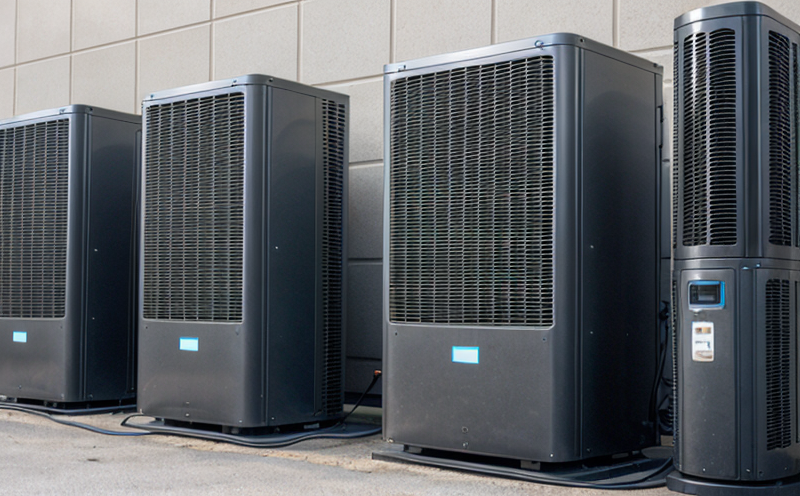Evaluating Passive vs. Active Cooling Solutions for Telecom Systems
Evaluating Passive vs. Active Cooling Solutions for Telecom Systems A Crucial Decision for Business Success
In todays fast-paced digital landscape, telecommunications systems are the backbone of modern business operations. These complex networks require reliable and efficient cooling solutions to ensure optimal performance, prevent downtime, and maintain data integrity. With the increasing demand for high-speed internet, cloud computing, and edge networking, telecom system administrators must carefully evaluate passive vs. active cooling solutions to determine which approach best suits their needs.
At Eurolab, our team of experts offers a comprehensive laboratory service that helps businesses make informed decisions about cooling solutions for their telecom systems. Our Evaluating Passive vs. Active Cooling Solutions for Telecom Systems service provides an unbiased assessment of the strengths and weaknesses of each option, enabling companies to maximize efficiency, reduce costs, and enhance overall system reliability.
The Importance of Cooling Solutions in Telecom Systems
Telecom systems generate significant heat due to the high power consumption of network equipment, servers, and data centers. Inadequate cooling can lead to
System overheating Temperature fluctuations can cause hardware malfunctions, reduced performance, and increased energy consumption.
Data loss and corruption Prolonged exposure to high temperatures can compromise data integrity, resulting in costly downtime and potential business losses.
Equipment damage Overheating can shorten the lifespan of critical components, necessitating premature replacements.
To mitigate these risks, telecom system administrators must invest in reliable cooling solutions that balance efficiency, cost-effectiveness, and environmental considerations.
Passive Cooling Solutions A Viable Option for Telecom Systems
Passive cooling systems use natural convection or radiation to dissipate heat without the need for mechanical components. This approach offers several benefits
Advantages of Passive Cooling Solutions
Low maintenance costs Without moving parts, passive cooling systems reduce the risk of mechanical failures and associated repair expenses.
Increased reliability Elimination of mechanical components minimizes the likelihood of system downtime due to component failure.
Improved energy efficiency Passive cooling solutions can be more energy-efficient than active systems, especially in data centers with high cooling demands.
Some popular passive cooling solutions for telecom systems include
Airflow management Strategic placement and configuration of air vents, grills, or baffles to optimize airflow and heat dissipation.
Heat sinks Thermal interfaces that absorb and dissipate heat from components, reducing temperature buildup.
Radiative cooling Systems using reflective surfaces or other technologies to radiate excess heat away from the system.
Active Cooling Solutions A Powerful Option for Telecom Systems
Active cooling systems employ mechanical components, such as fans or pumps, to circulate a coolant (e.g., water or air) through the system. This approach offers several benefits
Advantages of Active Cooling Solutions
High cooling capacity Active systems can provide higher cooling capacities than passive solutions, making them suitable for high-density data centers.
Flexibility and scalability Active cooling solutions can be easily scaled up or down to accommodate changing cooling demands.
Improved temperature control Active systems enable precise temperature control, allowing telecom system administrators to optimize performance and reduce energy consumption.
Some popular active cooling solutions for telecom systems include
Liquid cooling Systems using a liquid coolant (e.g., water or glycol) to absorb heat from components before dissipating it away from the system.
Air-cooled chillers Chiller units that use refrigerants to cool air, which is then circulated through the system.
Hybrid cooling systems Solutions combining active and passive cooling techniques to optimize efficiency and performance.
Evaluating Passive vs. Active Cooling Solutions for Telecom Systems
When deciding between passive and active cooling solutions, telecom system administrators should consider the following factors
Cooling demands Assess the systems cooling requirements based on component power consumption, ambient temperature, and airflow.
Maintenance costs Evaluate the potential maintenance expenses associated with each solution, including parts replacement and labor costs.
Energy efficiency Compare the energy consumption of passive and active systems to determine which approach is more cost-effective.
Scalability and flexibility Consider the ability of each solution to adapt to changing cooling demands or system upgrades.
By weighing these factors and consulting with Eurolabs experts, businesses can make an informed decision about the optimal cooling solution for their telecom systems.
QA Evaluating Passive vs. Active Cooling Solutions
Q1 What are the key differences between passive and active cooling solutions?
Passive cooling solutions rely on natural convection or radiation to dissipate heat without mechanical components. Active cooling systems employ mechanical components, such as fans or pumps, to circulate a coolant through the system.
Q2 Which type of cooling solution is more energy-efficient?
Both passive and active cooling solutions can be energy-efficient, depending on the specific implementation and system design. However, passive cooling solutions often require less energy due to the absence of mechanical components.
Q3 Can I use both passive and active cooling solutions together in my telecom system?
Yes, hybrid cooling systems combine passive and active techniques to optimize efficiency and performance. This approach is suitable for applications where both high cooling capacity and low maintenance costs are required.
Conclusion
Evaluating passive vs. active cooling solutions for telecom systems requires careful consideration of several factors, including cooling demands, maintenance costs, energy efficiency, and scalability. At Eurolab, our experts provide comprehensive laboratory services to help businesses make informed decisions about cooling solutions that meet their unique needs.
By partnering with Eurolab, you can
Maximize system reliability Ensure optimal performance and reduce downtime due to overheating or component failure.
Minimize energy costs Choose the most cost-effective cooling solution for your telecom system.
Improve data integrity Prevent data loss and corruption by maintaining a stable temperature environment.
Trust Eurolabs expertise in evaluating passive vs. active cooling solutions for telecom systems and take the first step towards optimizing your business operations today.




